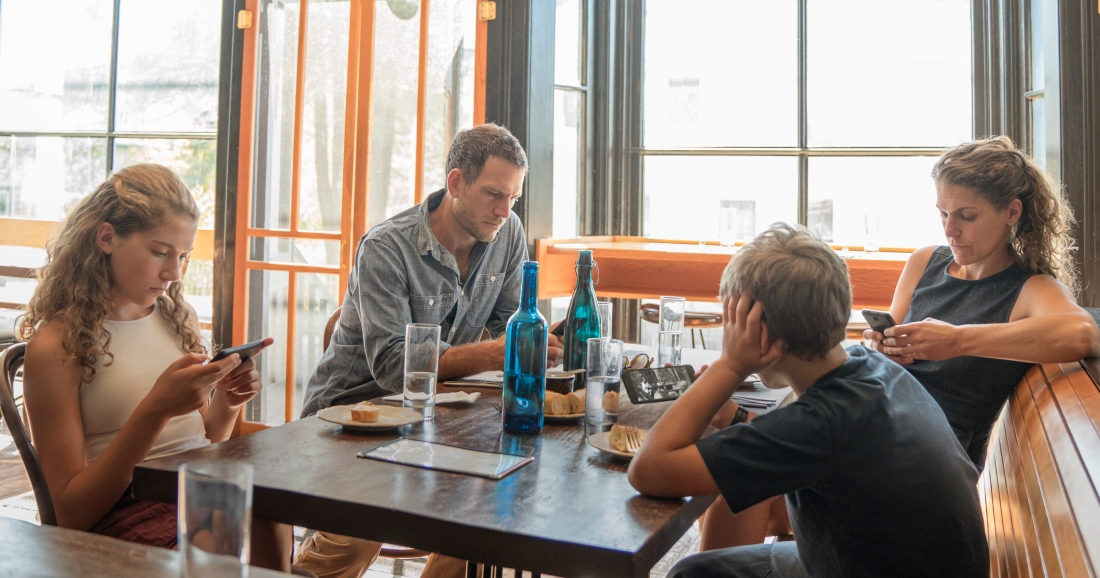Earlier this year, we predicted that reducing screen time would be the only 2018 resolution that matters. A quick reminder why:
- We look at our smartphones for an average of 2-3 hours a day, and at least 50 times a day. And these are low estimates: some of us peek 150 times daily
- An increasing number of studies draw clear links between excessive screen time and depression (here’s just one)
- Phubbing. Looking at your phone instead of talking to the person opposite you has its own WORD. It’s that big a thing. Teenagers do it constantly, and their parents aren’t showing a great example either…
Early 2018, the only way to keep track of your own smartphone use was with apps like Moment, Space or ScreenTime, all of which tell you how long you’ve spent on your phone each day, how many times you’ve looked at it and so on. Each offer varying levels of incentives to get you to reduce your screen time.
But ultimately, the only way things were really going to improve here was if the people responsible for this addiction in the first place – Google, Apple, Facebook and Amazon – did something about it themselves. After all, it’s now common knowledge that even Steve Jobs limited his kids’ screen time; they hadn’t even seen the iPad when it came out.
So now most have reacted, just how convincing are those reactions?
Facebook has rolled out screen time controls on its main app, and on Instagram. All we’ve really noticed is a “tick” that tells you when you’ve seen all the new photos in your feed on Instagram. Verdict: symbolic changes with little real impact.
Google has incorporated a “Digital Wellbeing” feature in the settings of Android (since the “Pie” version, released in August and notably embedded in its new Pixel 3 phones). A circle tells you how much time you’ve spent on each app each day. A “Wind Down” feature tones the colours down before bedtime; and placing the Pixel 3 with the screen facing down puts it in a “do not disturb” mode. Verdict: some great ideas, but nothing that original.
Apple introduced a new “Screen Time” functionality which, unlike Android’s, you can’t really hide from. It’s offered as a key stage, like iCloud & co, when you set up your phone; it’s constantly visible when you swipe left; and above all, it works. I just got my screen time down to under 2 hours a day, notably because Screen Time shuts off my apps between 10pm and 7am (yes, I still peek sometimes after ten; and yes, you can change those times. But it’s the intention that counts). Verdict: the most effective option out there today.

With or without these tools, what can we do on a daily basis? Here are our 5 tips for screen time reduction:
1. Resist the urge: pick up a book instead. Our phones have become our reflex go-to comforter whenever we have more than 5 free seconds. Try grabbing some paper! Or what about boredom, remember that? It’s great for creativity!
2. Turn off notifications: do you really need something popping up on your screen and breaking your concentration just because your mum liked your latest #foodporn pic on Instagram? I thought not. Keep notifications for the most essential apps – just texts, try it! – and win back essential thinking time.
3. Use smartphone alternatives: an old-fashioned alarm clock can keep you from checking your phone as soon as you wake. The phone stays in the lounge! Definitely no phones during meals; and why not leave it at home when you go on holiday? A camera and feature phone will give you a bonus digital detox break.
4. Parents: lead by example. You can’t tell your kids to put their phones away and then pick up yours because you have to answer “this one work email.” More on that in the excellent above-referenced article. Oh and on this topic, if your kids don’t have a phone yet, postpone the fateful day as long as possible. There’s no going back afterwards…
5. Turn off the colours: notification dots are red for a reason: it’s an attention-grabbing color. Don’t let it grab your attention by switching your phone’s display to black and white. Three clicks of the main iPhone side button, or a trip to Android settings, and you’re free!
Of course, none of these changes are easy to activate overnight. Not all of them are manageable all of the time. But every little effort helps. Not only to get your creativity flowing again, but also to boost your attention span. A Microsoft study a few years ago stated that while people could focus on a single task for 12 seconds back in 2000, that figure dropped to 8 seconds in 2013. That’s about one second less than a goldfish. The culprit? Phones, of course.
So what are you waiting for? Now stop reading this and pick up a book 🙂
BONUS TIP: In the street, try walking into people who don’t see you coming because they’re looking at their phone. They may look twice next time…
Middle photo © Motorola (yes, really!); top photo: © Getty Images
Great blog. I have just written a book that is becoming a bestseller in Ireland. It’s called “Fun Unplugged” and all about a fin alternative for kids to help them interact and socialize more. Happy to chat to you more about it. Peter Cosgrove
http://fununpluggedbook.com/
LikeLike